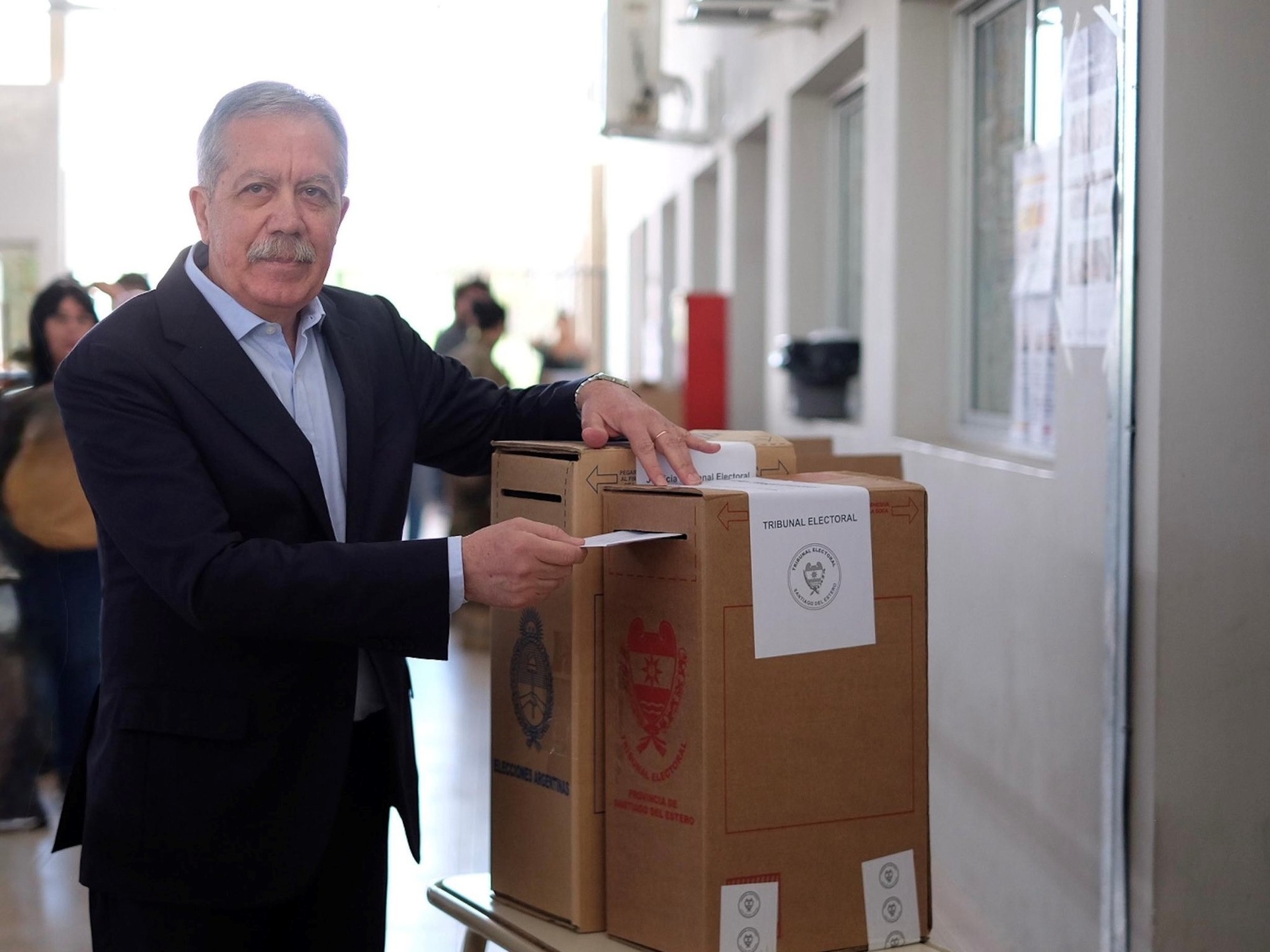Santiago del Estero elections: a thrashing by the ruling party and the appointment of Gerardo Zamora's successor.

Elías Miguel Suárez , Gerardo Zamora's successor, was elected the new governor of Santiago del Estero by a wide margin. With 65.95% of the polling stations counted, the Civic Front candidate was leading with 69.80% of the votes, compared to 12.31% for Alejandro Parnás (Despierta Santiago) and 11.88% for Italo Cioccolani (La Libertad Avanza).
This is a historic change in the province, where for the first time in twenty years a Zamora will not govern , after the four non-consecutive terms of the current governor (2005-2013 and 2017-2025) and that of his wife, Claudia Ledesma Abdala de Zamora.
 Elías Suárez with Gerardo Zamora.
Elías Suárez with Gerardo Zamora.The official candidate is agricultural engineer Elías Miguel Suárez (69), Chief of Staff of the Santiago del Estero office. A native of the provincial capital, Suárez held his first public office in 1999, when he became Deputy Press Secretary for the Municipality of the Capital.
Two years later, he became Director of Institutional Relations for the same municipality, and in 2003, Secretary of Government for that commune.
Zamora, for his part, ran as a senatorial candidate for the Civic Front, where he had almost no trouble securing one of the three seats up for grabs. With 79.36% of the polls counted, he was leading with 55.31%. Further behind were José Emilio Neder (Fuerza Patria) with 18.86%; Tomás Figueroa (La Libertad Avanza) with 14.67%; and Facundo Pérez Carletti (Despierta Santiago) with 8.73%.
Santiago del Estero was the only province to elect a governor this Sunday, where nine candidates were vying for the upset of unseating the ruling party. It also elected 40 provincial deputies, three mayors and council members in Clodomira, Villa Atamisqui, and Beltrán, and 137 municipal commissioners.
 Italo Cicciolani, candidate for governor of Milei, came in third.
Italo Cicciolani, candidate for governor of Milei, came in third.Contrary to the low turnout nationwide, 72.6 percent of the registered voters voted in Santiago.
There was one peculiarity: this Sunday , two different systems were used . The traditional party-based ballot was added to the national Single Paper Ballot, forcing Santiago residents to have two ballot boxes at the same time. One with blue letters for national authorities and another with red letters for provincial ballots.
Clarin





